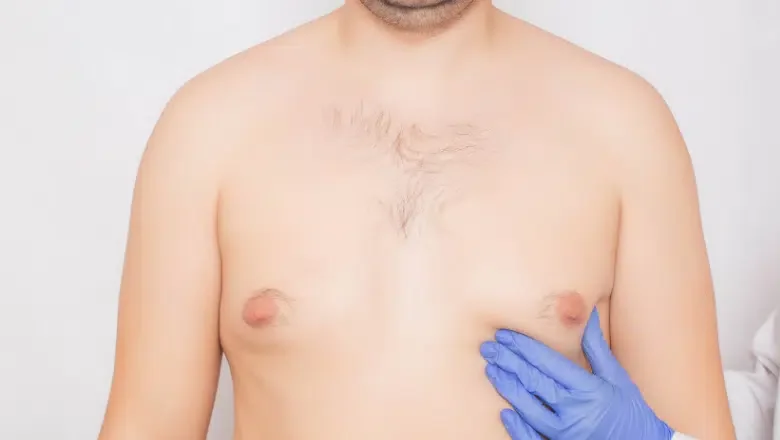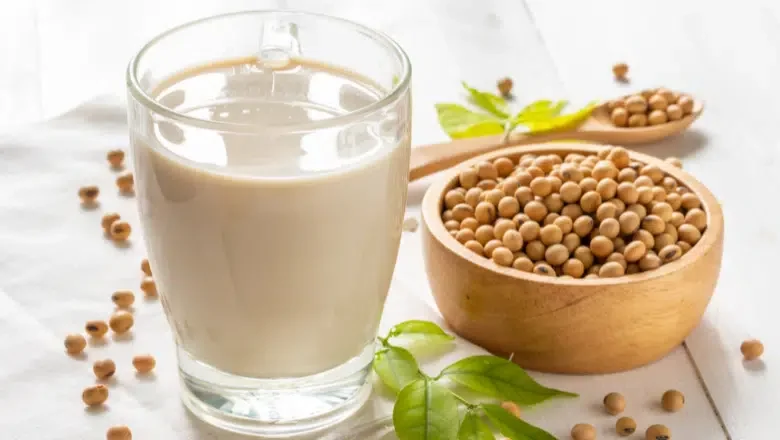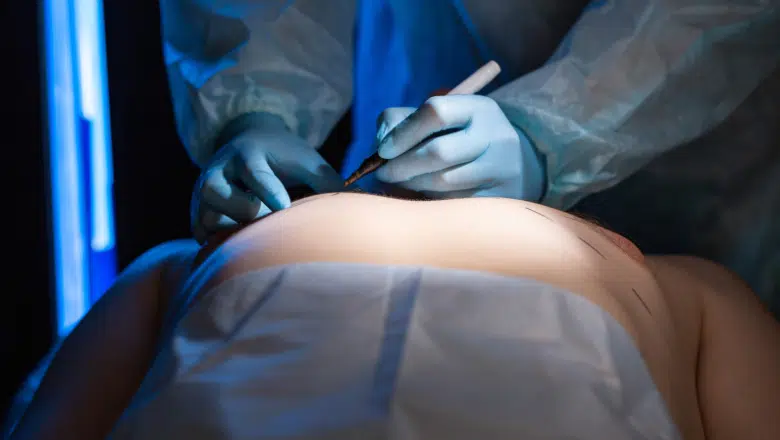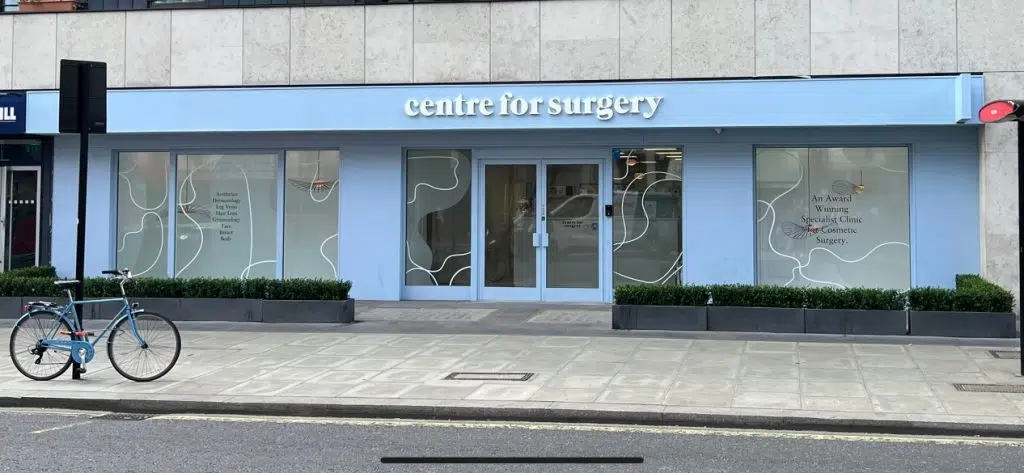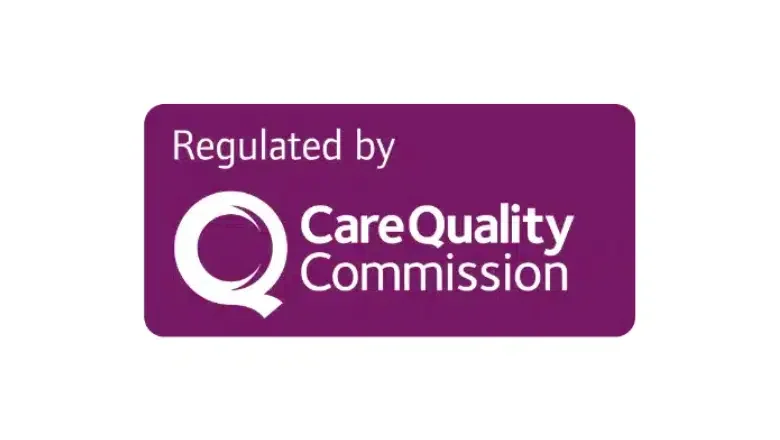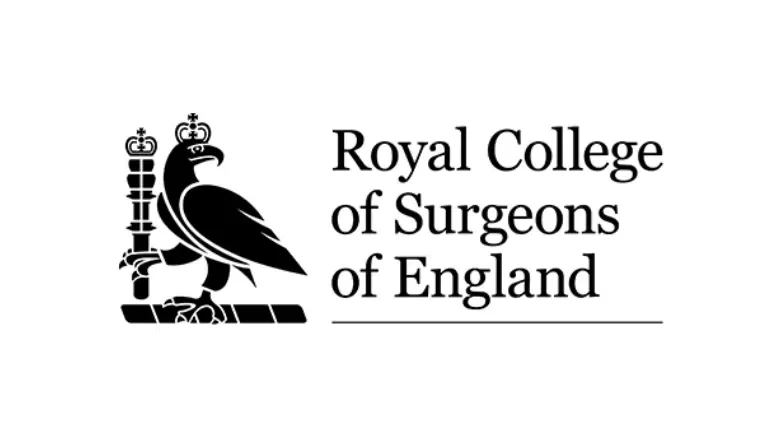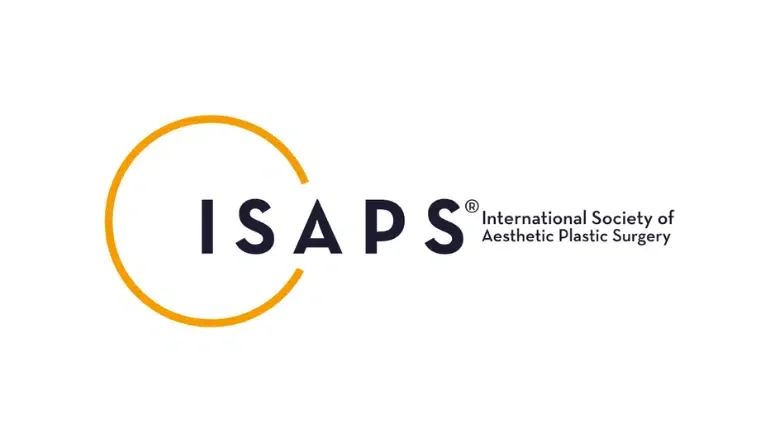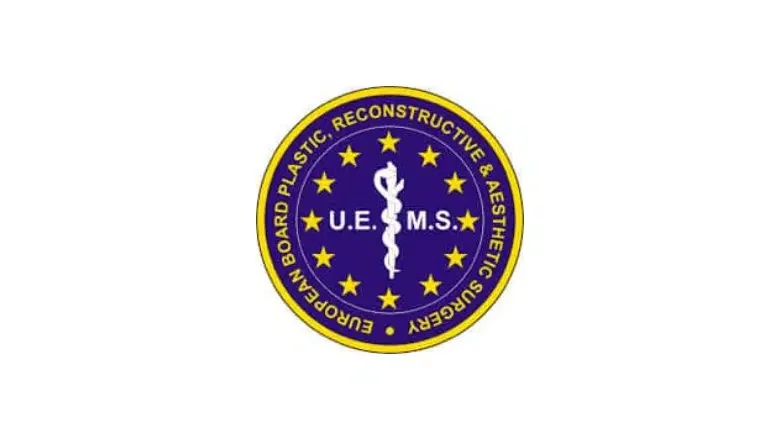Man Boobs Causes and Treatment
Are you contending with the embarrassing reality of enlarged male breasts, known as “man boobs”? Are you curious about the underlying causes of this condition and in search of effective remedies? This is a pervasive issue impacting a significant number of adult males in the UK, clinically termed “Gynecomastia.”
RELATED: Why Is Gynecomastia Becoming More Common?
Men diagnosed with Gynecomastia experience an excessive enlargement of their breast tissues, resulting in a distinct protrusion uncharacteristic of the male physique. While both sexes are biologically equipped with breast tissue from birth, the male chest generally remains undeveloped and rudimentary in comparison to the female’s fully developed breasts. Several medical conditions and factors may instigate an unusual enlargement of this male breast tissue.
RELATED: Gynecomastia vs Chest Fat – How to Tell the Difference
The prevalence of “man boobs” in most males can be attributed to an excessive accumulation of body fat. Such individuals possess a higher tendency for fat deposition in the pectoral region, creating a layer that obscures the underlying musculature. These instances of enlarged male breasts can be effectively addressed through a combination of muscle-building exercises and targeted fat reduction strategies. Alternatively, medical interventions like liposuction can offer an expedient solution.
Gynecomastia is a distinct condition from simple fat deposition. It affects approximately fifty percent of adolescent males during the hormonal fluxes of puberty. Fortunately, this instance often resolves naturally, with only about thirty percent of affected individuals retaining the condition into adulthood.
Effective medical procedures are readily available to address persistent cases of Gynecomastia in adults. When considering surgical intervention for rectifying enlarged male breasts, selecting a specialist plastic surgery clinic with extensive experience in Gynecomastia surgery is crucial. Centre for Surgery, a leading plastic surgery clinic in London, offers personalised consultations and treatment plans for patients struggling with this condition. An in-depth examination by our expert surgeons ensures a treatment strategy custom-tailored to the unique needs of each patient.
By understanding the causes and treatments of Gynecomastia, you can take a significant step towards reclaiming your confidence and bodily comfort.
RELATED: Gynecomastia Surgery FAQs – Q&A about Male Breast Reduction
What Causes Boobs in Men?
The development of man boobs in men often stems from a hormonal imbalance, specifically between the male and female sex hormones, androgen and oestrogen. Breast tissue is present in both genders and is primarily responsive to the influence of oestrogen. Men typically produce a higher amount of androgen, effectively inhibiting the development of breast tissue, as opposed to women who generate more oestrogen, leading to fuller breast development. Interestingly, around half of all male infants are born with enlarged breasts due to exposure to maternal oestrogen, which normally rectifies itself a few weeks post-birth.
RELATED: Puffy Nipples – Causes, Symptoms and Treatments
Hormonal changes related to puberty may also trigger gynecomastia, although it generally resolves spontaneously within two years. It’s worth noting that men are more susceptible to hormonal fluctuations, increasing the chances of an imbalance between oestrogen and androgen, which can potentially lead to enlarged male breasts.
Certain lifestyle habits can instigate this hormonal imbalance, resulting in the development of man boobs. Identifying and rectifying these risk factors can mitigate the chance of this imbalance while also reducing the risk of other health issues.
Several causes of mean boobs include:
Steroid Use
Anabolic steroids can lead to man boobs as the body metabolises the excess androgens into oestrogen. This can result in an increase in glandular tissue and fat deposition in the male breast.
Excessive Body Fat
As body fat accumulates, the body’s hormone production changes, reducing androgen production in favour of oestrogen. This hormonal shift can cause the development of female-like breasts in men.
Deprivation Diets
If your diet lacks sufficient nutrients, your body’s androgen levels can decrease, disrupting the oestrogen-to-androgen ratio. Some men develop man boobs while undereating, whereas others might not until they resume normal eating. This is sometimes referred to as “refeeding Gynecomastia”.
Alcohol Abuse
Chronic alcohol consumption can compromise the liver’s ability to expel excess oestrogen. Furthermore, certain plants used in alcohol production and the hops used in beer brewing contain phytoestrogens, which mimic oestrogen within the body. Severe alcohol abuse can damage liver cells, impairing their ability to metabolise hormones effectively. A liver suffering from cirrhosis due to alcohol abuse may produce excess oestrogen, leading to man boobs.
Medication Use
A study published in the New England Journal of Medicine found that medications account for one-quarter of all cases of man boobs. This includes drugs such as blood pressure medications, antidepressants, and antibiotics. Consult your GP if you suspect your medications might contribute to the problem.
Substance Abuse
Men who frequently use recreational drugs could develop more breast tissue. Although the exact mechanism by which cannabis causes man boobs remains unclear, evidence suggests it can lower androgen levels for about twenty-four hours.
Certain Products
Research has indicated that topical application of lavender oil and tea tree oil can cause gynecomastia. Commonly found in lotions, shampoos, and soaps, these substances could potentially contribute to the development of man boobs. Men whose sexual partners use vaginal oestrogen creams might also inadvertently absorb oestrogen during unprotected sexual intercourse, thus increasing their risk.
What Other Medical Conditions Might Contribute to the Development of Enlarged Male Breasts?
Hormone-Producing Tumours
Certain types of neoplasms, specifically those originating from the testicles or adrenal glands, can lead to altered hormone production. This shift disrupts the normal androgen-to-oestrogen balance, potentially instigating the enlargement of male breasts.
Renal Failure
Kidney dysfunction can cause a host of metabolic and hormonal imbalances in the body. Approximately half of the patients undergoing dialysis treatment for kidney failure experience gynecomastia, resulting from these hormonal disturbances.
Hyperthyroidism
This condition wherein the thyroid gland overproduces thyroid hormones, leading to an overall increase in the body’s metabolic rate. The excess thyroid hormone can disrupt the body’s typical hormonal balance, causing an overproduction of oestrogen relative to androgen, which may contribute to the development of enlarged male breasts.
Hypogonadism
Hypogonadism pertains to a group of conditions characterised by a marked reduction in the body’s androgen production. This results in a disproportionate androgen-to-oestrogen ratio, which could contribute to the manifestation of Gynecomastia.
Ageing
The ageing process itself, particularly when accompanied by weight gain, can lead to hormonal changes that influence the development of Gynecomastia. The hormonal fluxes typical of older age, specifically a decrease in male hormones and a relative increase in oestrogen, can trigger breast tissue enlargement in men.
Can Certain Foods Cause Man Boobs?
Certain food items can indirectly contribute to the manifestation of enlarged male breasts, or “man boobs”, primarily through their influence on the body’s hormonal balance. Specifically, foods high in oestrogen or substances that mimic oestrogen can lead to increased oestrogen production in the body. While these foods are generally benign when consumed in moderation, excessive intake can disrupt the body’s oestrogen balance, potentially leading to fat accumulation in areas like the chest.
Various food items potentially implicated in the development of man boobs include:
Soy Products
A majority of soy-derived products contain plant oestrogens that closely resemble human oestrogens. Consuming these soy products can enhance the body’s oestrogen levels, potentially leading to the development of man boobs.
Dairy Products
Extensive research has suggested that dairy products contain a significant amount of oestrogen. Although milk is generally a superb dietary choice for maintaining a balanced diet, it’s recommended to limit the consumption of milk and other dairy products if you’re attempting to address the issue of man boobs.
Deep-Fried and Packaged Foods
Deep-fried or pre-packaged foods typically contain an unhealthy amount of saturated fat. This increased fat content can augment the body’s fat-to-muscle ratio, possibly inciting the development of man boobs. Additionally, these food items may also contain elevated oestrogen levels, further contributing to this condition.
Frozen Meat
Not only are frozen meat products typically high in saturated fat, but they’re also often encased in polyvinyl chloride (PVC) packaging. Certain substances from this plastic packaging can be absorbed into the meat, leading to various detrimental health effects, including hormonal imbalances.
Beetroot
Beetroot may be a beneficial natural supplement for those with insufficient oestrogen levels in their bodies. However, for those grappling with hormonal imbalances, beetroot might not be the most suitable choice as it can intensify the imbalance by raising the body’s oestrogen levels.
Alcoholic Beverages
All forms of alcohol can impair the liver’s ability to efficiently expel surplus oestrogen. Particularly, beer contains phytoestrogens which the body can metabolise into oestrogen. This process can further boost the body’s oestrogen levels and increase the likelihood of developing man boobs.
Can man boobs be reduced naturally?
There are several remedies that one can employ at home to mitigate the appearance of enlarged male breasts or ‘man boobs’. However, it’s crucial to remember to consult a medical professional before initiating any of these home-based solutions. These remedies encompass:
Regular Exercise
Implementing a regular exercise regimen can assist in diminishing chest fat. Consistent physical activity not only aids in fat reduction but also helps tone the chest muscles, imparting a more masculine appearance to the breasts. Establishing an exercise routine that includes both aerobic and high-intensity exercises can facilitate the swift elimination of chest fat, thus reducing the prominence of man boobs.
Balanced Diet
Complementing a regular exercise routine with a nutritious diet can enhance weight loss outcomes and expedite the reduction of man boobs. Weight gain primarily occurs when calorie intake surpasses calorie expenditure. Incorporating food items that promote fat burning — such as fruits, vegetables, lean meats, and fish — into your diet can facilitate weight loss, even when not exercising. Limiting the intake of sweets and processed foods is also advisable to accelerate the weight loss process.
Green Tea
Green tea contains abundant antioxidants that boost metabolism, enabling your body to burn more calories and fat. This increased metabolic activity can potentially contribute to a reduction in the size of man boobs.
Ginger Consumption
Ginger can stimulate your metabolism and assist in eliminating excess fat. While ginger can be incorporated into meals during cooking, nutritionists often recommend consuming ginger tea thrice daily to amplify its weight reduction effects and metabolic acceleration.
How are man boobs treated?
Centre for Surgery is the leading cosmetic surgery clinic in London with many years of experience in the treatment of man boobs using the safest and most effective surgical treatments. Men keen to get rid of man boobs commonly choose the Centre for Surgery as we are renowned for the treatment of enlarged male breasts, with patient satisfaction rates as high as 95% with hundreds of verified Google and Trustpilot reviews.
RELATED: How can you get rid of gynecomastia without surgery?
The first step in the male breast reduction patient journey involves a detailed face-to-face consultation with your surgeon, who will take a medical history and perform a physical examination. In some cases, your surgeon may perform an ultrasound scan to rule out any cancerous changes, especially in unilateral gynecomastia, which is painful and has developed quickly.
RELATED: How to prepare for gynecomastia surgery
Man Boob Surgery Techniques
Your treatment approach for enlarged male breasts or ‘man boobs’ will fundamentally hinge on the root cause and severity of your condition. Should your condition be traced back to the use of specific medications, it might be beneficial to cease using these drugs or transition to an alternative, as this could prevent further enlargement of your breasts. Similarly, treating the underlying health issue, if one exists, can also alleviate breast swelling.
Another treatment avenue is breast reduction surgery. Should you choose to proceed with this option, your plastic surgeon will carry out the procedure to diminish the size of your breasts by extracting excess breast tissue.
Liposuction
Most patients who have gynecomastia will have liposuction carried out first to remove excess fat deposits and contour the chest. Our surgeons use the power-assisted technique to break up the fat cells prior to the extraction. Fat tissue found in the chest is often more fibrous compared with other areas in the body, and power-assisted liposuction is ideal for the treatment of gynecomastia.
Surgical removal
Enlarged glandular tissue requires a minimally invasive surgical procedure for permanent and complete removal. Enlarged glands cannot be removed by liposuction alone.
BodyTite
Radiofrequency skin tightening using BodyTite is a highly effective treatment for tightening the skin of the chest wall after liposuction without the need for the scars associated with excess skin removal surgery.
RELATED: Can Gynecomastia Come Back After Surgery?
Gynecomastia surgery is typically performed under general anaesthesia. Depending on the specific patient attributes, liposuction may be applied to reduce the fat layer and enhance the chest contour, especially if substantial fat deposition is present in the chest region.
The duration of gynecomastia surgery can extend up to two hours, contingent on the complexity of each case. The surgeon will make incisions beneath the breasts and around the areola. Subsequently, the skin is detached from the tissues underneath. Excessive glandular and fat tissues are excised to sculpt a more masculine-looking chest. Any surplus skin can also be removed before suturing the incisions.
After breast reduction surgery, a recovery period of roughly two weeks is typically anticipated. It’s paramount to meticulously adhere to your surgeon’s post-operative instructions to mitigate the risk of any unwanted complications following the procedure.
Frequently Asked Questions Pertaining to the Causes and Management of Enlarged Male Breasts
What are the underlying factors that contribute to the enlargement of male breasts?
The enlargement of male breasts, medically termed as gynecomastia, can be attributed to a variety of causes. These encompass hormonal imbalances — specifically an excess of oestrogen or a deficiency of androgens —certain medical conditions, lifestyle choices, specific medications, and even certain food items. It’s crucial to consult with a surgeon to pinpoint the exact cause and devise an appropriate treatment plan.
What measures can be undertaken at home to naturally reduce the prominence of enlarged male breasts?
Several home-based interventions can alleviate the appearance of enlarged male breasts. Regular exercise and maintaining a balanced diet are crucial in managing this condition. Certain natural remedies, such as ginger and green tea, can also help stimulate metabolism and promote fat loss.
What could be the potential implications of leaving Gynaecomastia untreated?
If gynecomastia remains untreated, it may not necessarily lead to severe health complications, but it can cause significant emotional and psychological distress. Enlarged male breasts can lead to self-consciousness, embarrassment, and lowered self-esteem. It can also cause physical discomfort, particularly tenderness or sensitivity in the breast area. It’s crucial to consult a plastic surgeon at Centre for Surgery to discuss the potential risks and determine the best course of action.
Why Choose Centre for Surgery for Your Gynecomastia Surgery?
Centre for Surgery is your go-to clinic in London for specialist plastic surgery treatments, and we excel in tackling conditions like gynecomastia. Our team comprises some of the most skilled and experienced surgeons in the field who are committed to delivering the highest quality of care.
Expertise and Excellence
We pride ourselves on offering the latest, state-of-the-art treatments, employing cutting-edge surgical techniques that are tailor-made for each individual patient. Our surgeons are highly trained and possess years of expertise in treating gynecomastia, ensuring you are in the most capable hands.
Comprehensive Care
From your initial consultation to post-surgery aftercare, we offer a fully integrated and comprehensive treatment pathway. We take the time to understand your specific needs and concerns, providing personalised care that aims to give you the best possible results.
Patient Testimonials
Don’t just take our word for it; listen to what our satisfied patients have to say:
- “I had an incredible experience at Centre for Surgery. The staff were exceptionally caring, and I’m thrilled with the results!”
- “The surgery changed my life. I finally feel confident in my own skin, thanks to the talented team at Centre for Surgery.”
- “My surgeon was amazing. He explained everything in great detail and made me feel completely at ease. The post-surgery care was also excellent.”
Convenient Location
Situated at 95-97 Baker Street in London, we are easily accessible and offer a discreet, professional environment where you can feel comfortable discussing your needs.
Learn More
For more in-depth information about gynecomastia and your options for treatment, visit our plastic surgery blog: Centre for Surgery Blog.
Book Your Consultation Today
Ready to make a change and regain your confidence? Contact us now for a consultation:
- Phone: 0207 993 4849
- Email: contact@centreforsurgery.com
Don’t let gynecomastia hold you back any longer. Choose Centre for Surgery for your journey towards a more confident you.

